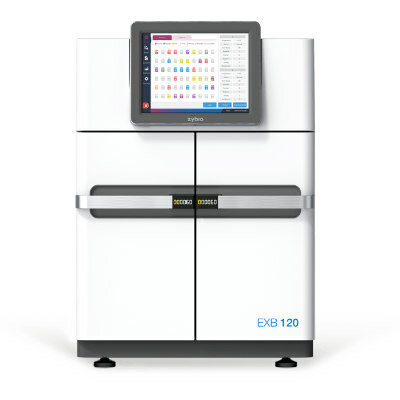New Biosensor Detects Extremely Low Bacteria Concentrations
By LabMedica International staff writers
Posted on 04 Aug 2009
A novel carbon-nanotube based potentiometric biosensor is able to detect extremely low concentrations of microorganisms quickly, easily, and reliably. Posted on 04 Aug 2009
The new biosensor, developed by researchers at the Universitat Rovira i Virgili (Tarragona, Spain) is able to detect ultralow concentrations of bacteria with the aid of specific aptamer sensors. Electrochemical measurements of test solutions are carried out by means of carbon nanotubes that are equipped with bacteria-specific aptamers that serve as binding sites.
The aptamers are anchored the to carbon nanotubes by means of additional functional groups, which are then deposited onto an electrode in an ultrathin layer. In the absence of bacteria, the aptamers fit closely against the walls of the carbon nanotubes. But when the biosensor is put into a specific microorganism-containing sample, the microbes stick to the aptamers; this adhesion influences the interaction between the aptamers and the nanotubes, changing the electrode voltage within seconds. When using the new biosensor, equipped with specific aptamers for Salmonella typhi, the researchers were able to detect extremely low concentrations of the typhus-inducing bacteria. In fact, the researchers were able to detect a bacterial concentration equivalent to 1 Salmonella bacterium in five milliliters of medium, and quantitative measurements were possible down to a low concentration of about 1,000 Salmonella per milliliter. The novel biosensor was described in the July 2009 issue of the journal Angewandte Chemie.
"This biosensor is specific; it does not react to bacteria other than Salmonella typhi,” said study authors Jordi Riu and F. Xavier Rius, of the department of analytic and organic chemistry. "Our new technique makes the detection of microorganisms as fast and simple as the measurement of pH value.”
Aptamers are synthetic short DNA or RNA strands that can be designed and made to bind a specific target molecule. They are composed of oligonucleic acid or peptide molecules that can be used for both basic research and clinical purposes as macromolecular drugs. Aptamers can be also be combined with ribozymes to self-cleave in the presence of their target molecule.
Related Links:
Universitat Rovira i Virgili













